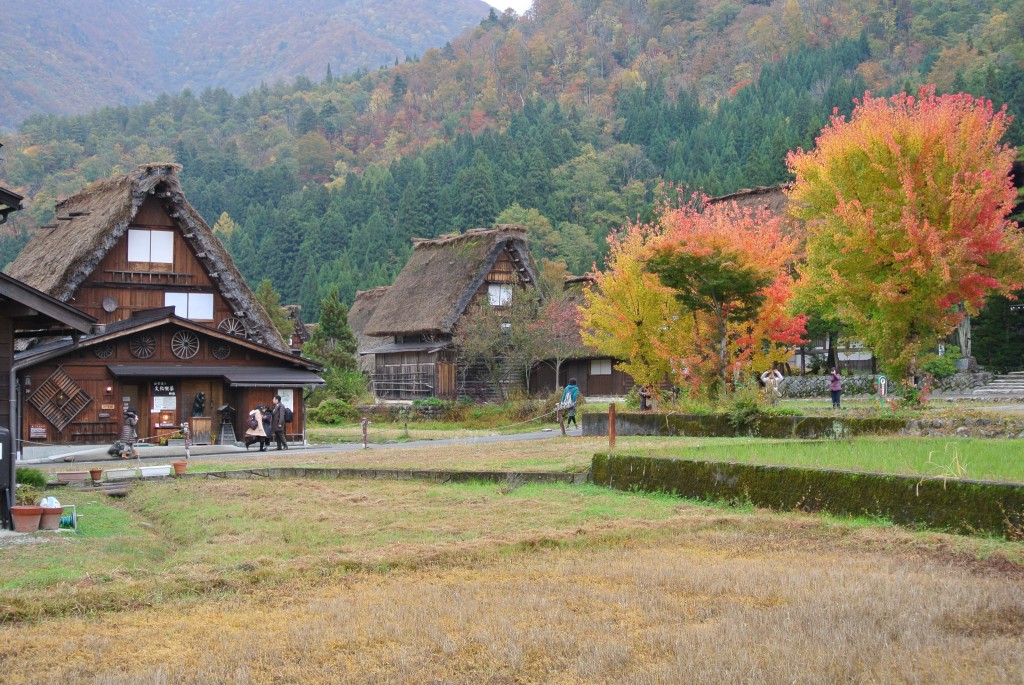
The distinctive gassho-zukuri housing of the World Heritage Site at Shirakawa-go
Shirakawa-go is a World Heritage Site in the Gifu mountains, notable for its gassho-zukuri (prayer-hands) housing, so-called because the tall roofs resemble hands at prayer. The architecture developed because of the heavy snowfalls, which could crush normal roofs and which led to winter isolation from the outside world. Within the tall, protective roofs there developed a unique culture based on extended families, with silkworm cultivation on the upper storeys and the making of gunpowder. The area developed its own folksong and dance too.
The mountain setting and abundance of rainfall mean that clear fresh spring water gushes and gargles virtually everywhere you walk. It’s the kind of setting in which Shinto thrives, for you feel that asking for the mercy of the kami and giving gratitude for their blessings are part of the natural order. It was with great interest therefore that I explored Hachiman Shrine at Shirakawa-go.
The shrine was much older than I’d expected, for it was founded between 708-715 before the Nara Period of Japan’s history. Saké brewing was long associated with the shrine, based on the freshest of fresh water from the melting snow. It’s thought the shrine had to be relocated 800 years ago, following an avalanche.
Physically, the shrine is distinctive for having a Shaka-do. Shaka is the name of the historical Buddha, so it’s an anomaly to find a hall dedicated to him in a post-Meiji shrine. It dates from the syncretic times of 1627, when the local lord had it constructed for his daughter who had fallen ill. Rebuilt in 1808, the hall housed four Buddha statues which are now shrine treasures.
Another distinctive building is the Omikiden (Sake Hall). Every year the shrine produces a special unrefined type of Doboroku saké. Made in the invigorating cold of January, it is served at the Doboroku Festival for which the shrine is famous. Other notable features include some stunning sacred cedar trees, as well as a water-basin that typifies the local culture’s closeness to nature.
Next to the shrine is the Doboroku Festival Museum, which houses exhibits about the annual pageant, held on October 14 and 15. Lion dancers and flags parade past the village’s distinctive houses to announce ‘the arrival of the gods’ (kami no idemashi), following which the Doboroku saké is served at the shrine. I tasted some, and believe me, it’s delicious, warming, and intoxicating! Stronger than usual saké, a couple of helpings are quite enough to make you feel merry and in festival mood.
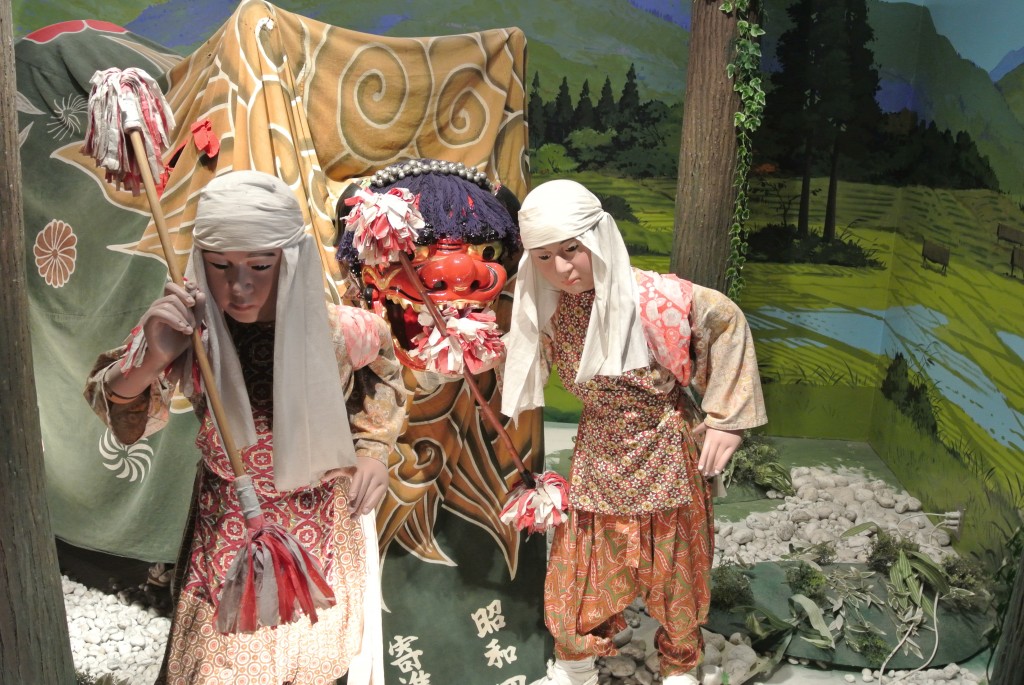
Lion dance as seen in the parade at the annual Doboroku Festival
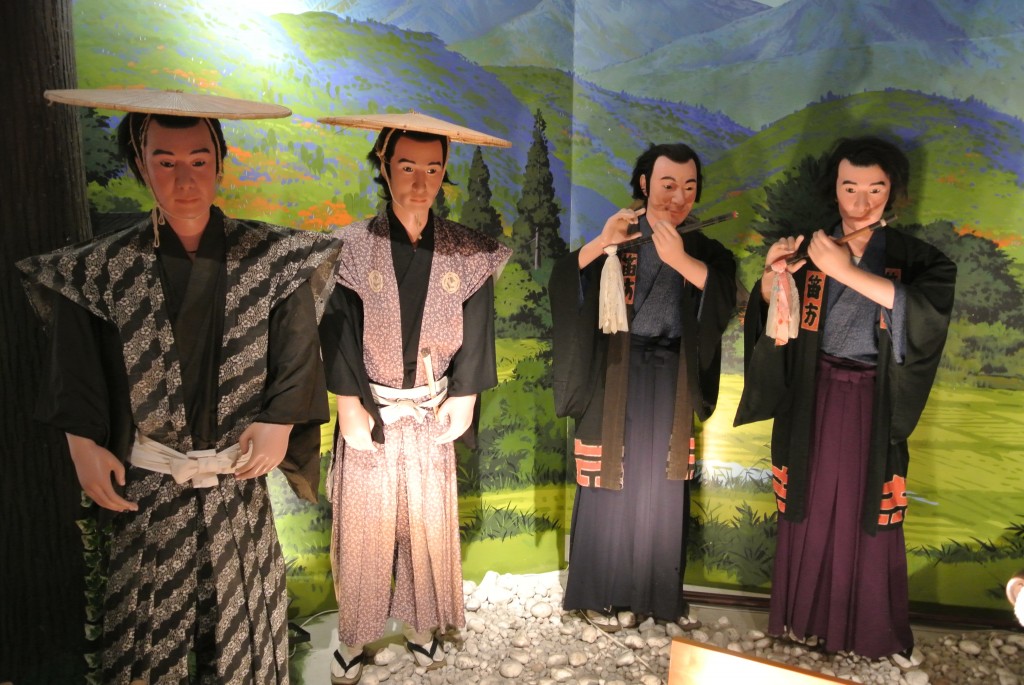
Festival musicians in local attire
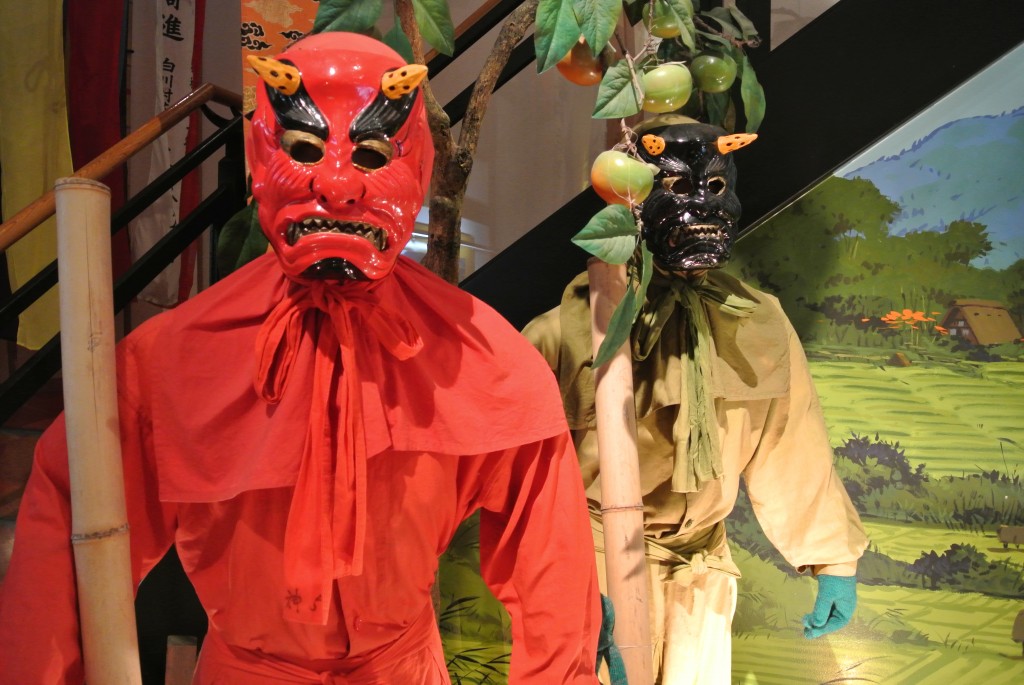
The oni are usually thought of as demons, but here lead the procession as the protectors of the kami
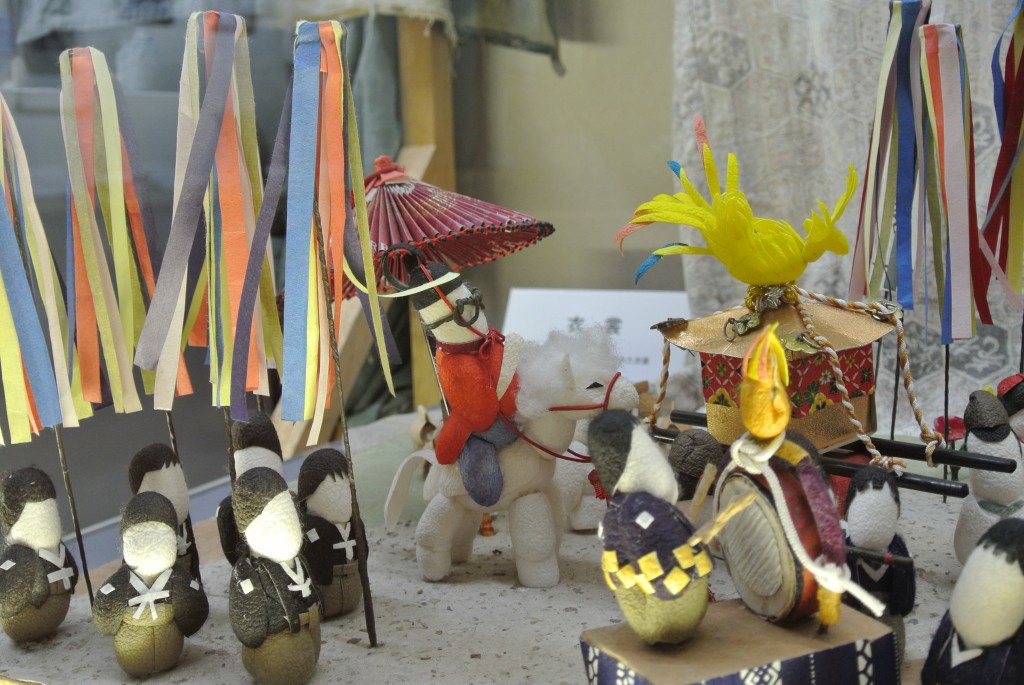
Recreation of the festival through silkworm cocoons
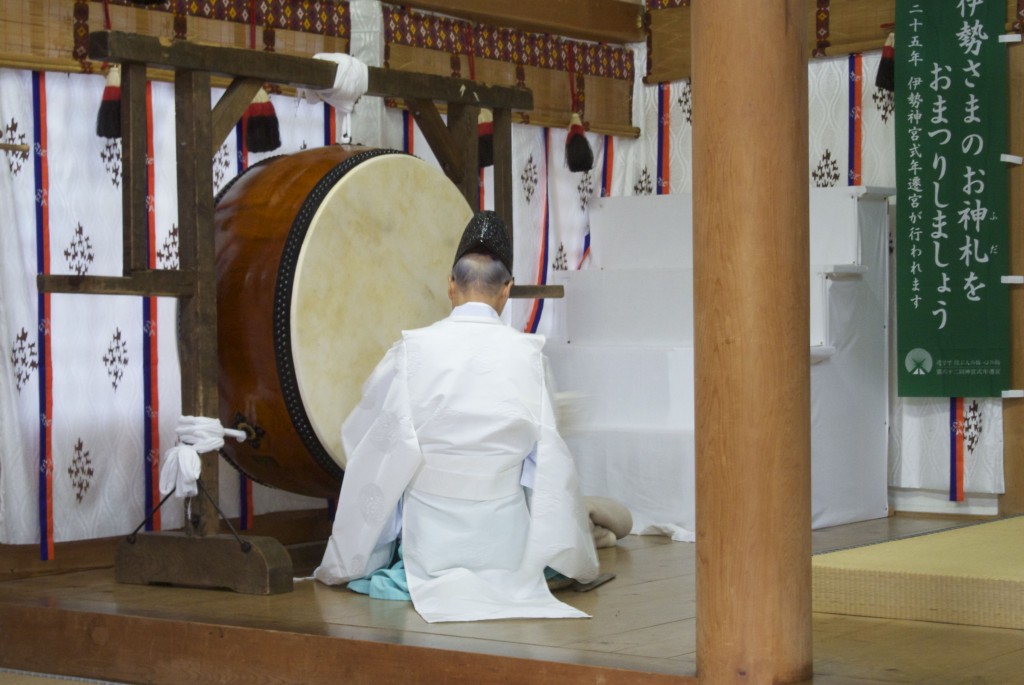
The priest bangs the drum during his morning ritual
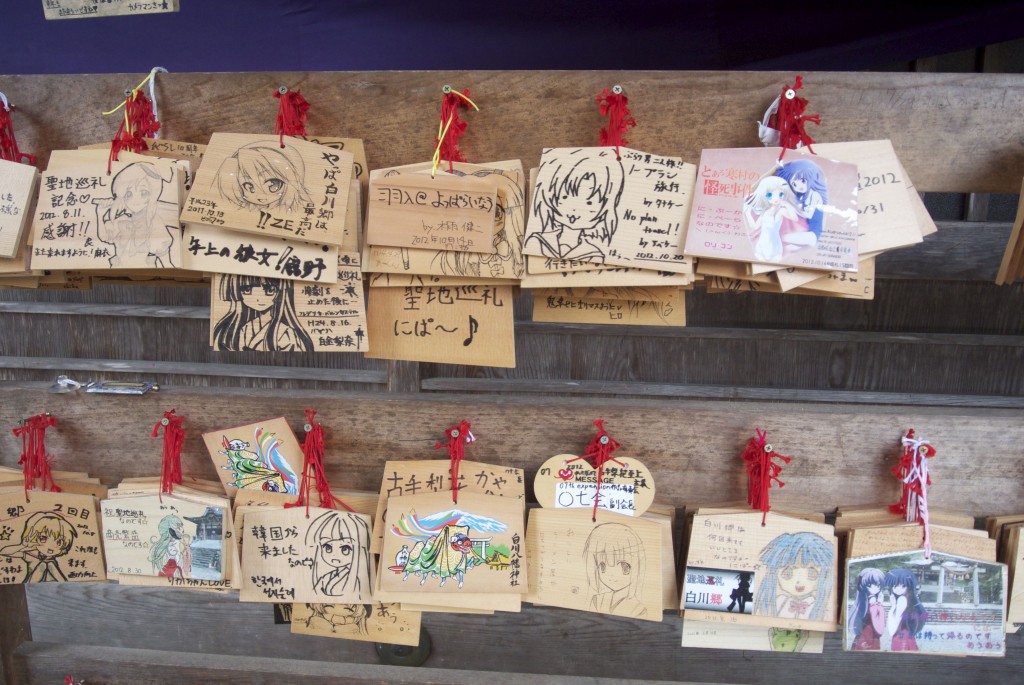
Manga and anime fans come here, because the shrine was featured in an anime and computer game
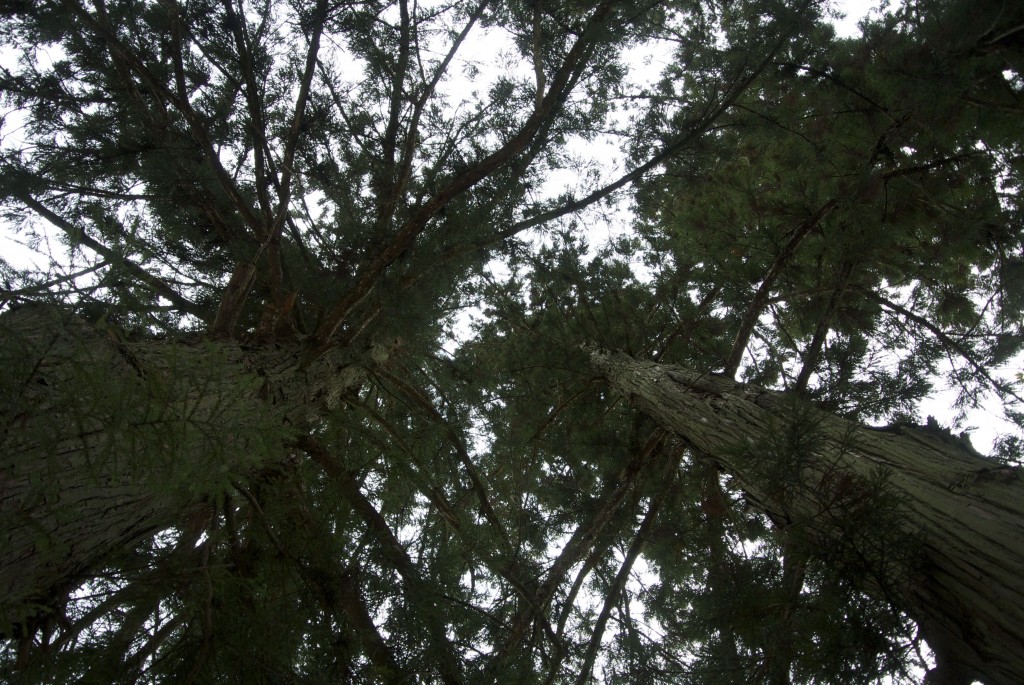
The shrine's sacred cedar trees reach high, high, high up towards heaven
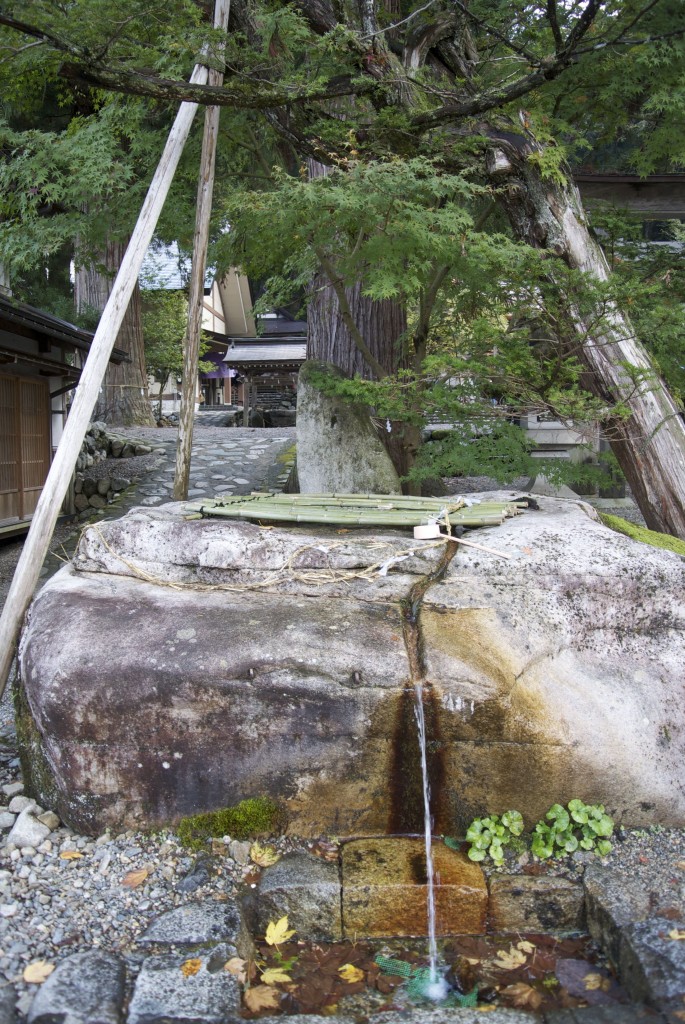
The shrine's water-basin seems to be moulded into the surroundings

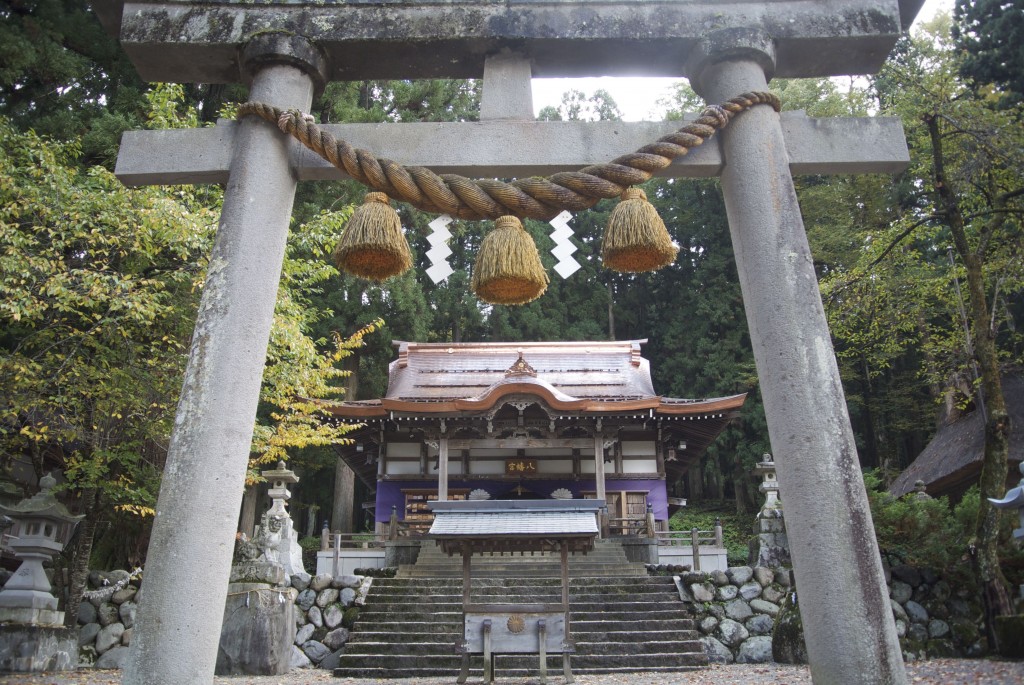
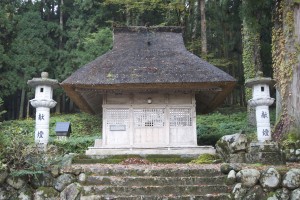
A.J. writes in to say…
Invigorating Place
Beautiful water-Do
Deep Mountains
High Trees Stones Streams
Silkworms Sake Snow
PrayerHand RoofTops
Sweet Satisfaction
Mother Nature’s Action